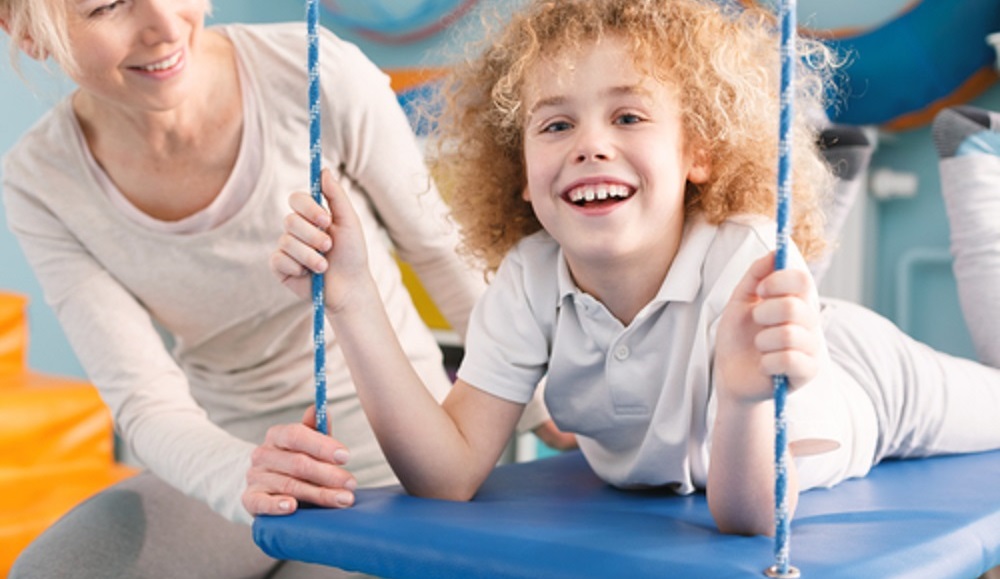
Why Your Students Need Sensory Rooms In Schools
Administrators, teachers, and parents often wonder:
- Why do students need sensory rooms in schools?
- What exactly is a “sensory break?”
- How do you identify when students need one?
These are great questions for team discussions about programming for the whole child. For years, Pediatric Therapeutic Services (PTS) has been a thought leader in this area. We continuously create new resources for helping students learn and implement new self-regulation strategies.
This is more important than ever as we continue to address the challenges created by the COVID-19 pandemic and support students’ behavioral and mental health needs in the least restrictive environment.
Here’s some of what we know about how breaks in sensory rooms not only help kids manage their feelings and behavior, but also foster self-care, resilience, and recovery.
Why do students need sensory rooms?
Our nervous systems receive and perceive sensory input through sight, hearing, touch, taste, smell, movement and balance, body position, and muscle control. The ability to adaptively and purposefully respond to this input is called “sensory integration” or “sensory processing.”
Sensory breaks (or brain breaks) are activities that help restore focus and improve self-regulation. They switch up the amount and type of sensory input our nervous systems take in and process. If our systems are overstimulated, we need calming sensory breaks—if under-stimulated, more alerting ones.
What is a Sensory Room?
“Sensory room” is an umbrella term for a broad variety of therapeutic spaces set apart for promoting self-organization and positive change. They contain specific sensory equipment for self-regulation activities designed to alleviate sensory processing difficulties.
Multidisciplinary teams should collaborate to implement student goals according to properly executed sensory room protocol. When used appropriately, sensory rooms in schools can:
- Help create a safe space.
- Provide opportunities for calming or alerting the nervous system.
- Increase skill acquisition for social-emotional development.
- Facilitate prevention and de-escalation strategies.
- Improve communication.
- Promote self-care/self-nurturance, resilience, and recovery.
- Nurture students’ increased independence and educational success.
What do students do in a sensory room?
Safe and fun experiences in a sensory room can help students successfully integrate back into the least restrictive environment—their general education classroom. Some of the activities that students benefit from in a sensory room include:
- Bouncing while seated on a large therapy ball.
- Hitting a punching bag.
- Climbing into a body sock.
- Swinging slowly on a platform swing.
- Throwing a slam ball against the floor.
- Jumping onto a crash pad.
Therapists typically tailor sensory strategies to address an individual’s specific needs.
Who benefits from sensory rooms?
Certain equipment and activities can have a therapeutic effect for almost anyone, depending on how, when, and why they’re used.
Students with access to items in a sensory room throughout their school day can help meet their own emotional, behavioral, and sensory needs. This is important to keep in mind as students present new or increased behavioral or mental health challenges as a result of the COVID-19 Pandemic.
Students with Sensory Processing Disorder
Sensory rooms can especially help people with sensory processing disorder (SPD). SPD causes difficulty effectively taking in, correctly interpreting, and appropriately responding to sensory input. It can have consequences for daily functioning, interacting with others, behaving appropriately, regulating emotions, and learning.
Fortunately, various sensory integration therapies can treat SPD. Occupational Therapists (OTs) use different methods and tools to stimulate and challenge all the senses so the individual can acquire and develop more effective self-regulation strategies. Much of that work takes place in school sensory rooms.
Why your students need sensory rooms as a part of post-pandemic programming
School closures and disrupted routines during the COVID-19 Pandemic and lockdowns led to an increase in behavioral and mental health challenges among students. Using our proprietary BudgetWatch™ software, we collected—and continue to collect—data from our partnering districts throughout the pandemic-related school closures.
This data shows skill regression in students due to virtual learning and inconsistent routines. Regression was especially evident in executive functioning and self-regulation skills, leading to an increase in:
- School avoidance
- Anxiety
- Truancy
Our data also shows that students are less accustomed to busy school environments and classroom routines. Due to this, some children—such as students with autism or SPD—can easily become overwhelmed by touch, movement, sights, or sounds associated with the classroom learning environment.
While sensory rooms are typically utilized by OTs, behavioral health issues can also be addressed by incorporating sensory breaks. Sensory rooms create a safe environment for all students to regulate their nervous systems, not just students on caseload.
How to Incorporate Sensory Rooms into Your Students’ Routines in a COVID-Safe Way
Sensory rooms can provide many clear benefits to students, but it’s important to implement sensory rooms in a COVID-safe way. Some ways to do this include:
- Creating individual sensory bins and materials for each student instead of using shared equipment. This can be stored in an individual cubby assigned to the student.
- Thoroughly cleaning all sensory room equipment after each session.
- Using the sensory room in small groups.
- Exchanging soft items for non-porous pillows and other materials that are easy to wash and sanitize. Use a cover or sleeve for equipment that can’t be washed (like swings and weighted blankets).
- Creating natural dividers within the room to keep students at a safe distance from each other.
- Continuing to follow CDC-recommended protocols, like wearing masks and washing hands.
How to make the most of having a sensory room in your school district
At PTS, we’ve developed resources that therapists like you can use to help students become their “super self.” This kid-friendly phrase describes what students are like when successfully using self-regulation strategies to maintain an optimal level of focus for learning.
Here are five key things we’ve discovered must happen to make the most of a sensory room in the school:
1. Identify the Students Who Stand to Benefit Most
Having teachers and staff fill out a simple questionnaire about how students present in the classroom takes the guesswork out of identifying kids with the most pressing sensory needs.
2. Follow a Focused Super-Self Plan
Creating and implementing a specific outline of self-regulation activities in the sensory room with fidelity helps all staff working with the child better understand how they best learn.
3. Analyze Data to Determine Effectiveness
Documenting and reviewing what does and doesn’t work for the student, along with self-reflection and staff data-fidelity checks, allows for continuous improvement and refinement of the child’s plan.
4. Empower all the Stakeholders
Giving not only students but also teachers and staff the power of their super-self promotes confidence and facilitates collaboration of a child’s whole academic experience.
5. Foster Students’ Independence in the Classroom
Because they’re able to meet their personal sensory needs in the sensory room, students pave their own way for more effective learning, more positive behavior, and a greater sense of well-being in the classroom.
Contact PTS to implement sensory rooms in your school today
There are many benefits to incorporating sensory rooms as a part of your school’s related service program, especially as a way to address the challenges created by the COVID-19 Pandemic. PTS can help you implement brain breaks throughout the school day to help students regulate their nervous systems and improve their ability to learn in the least restrictive environment.
Contact us today!



